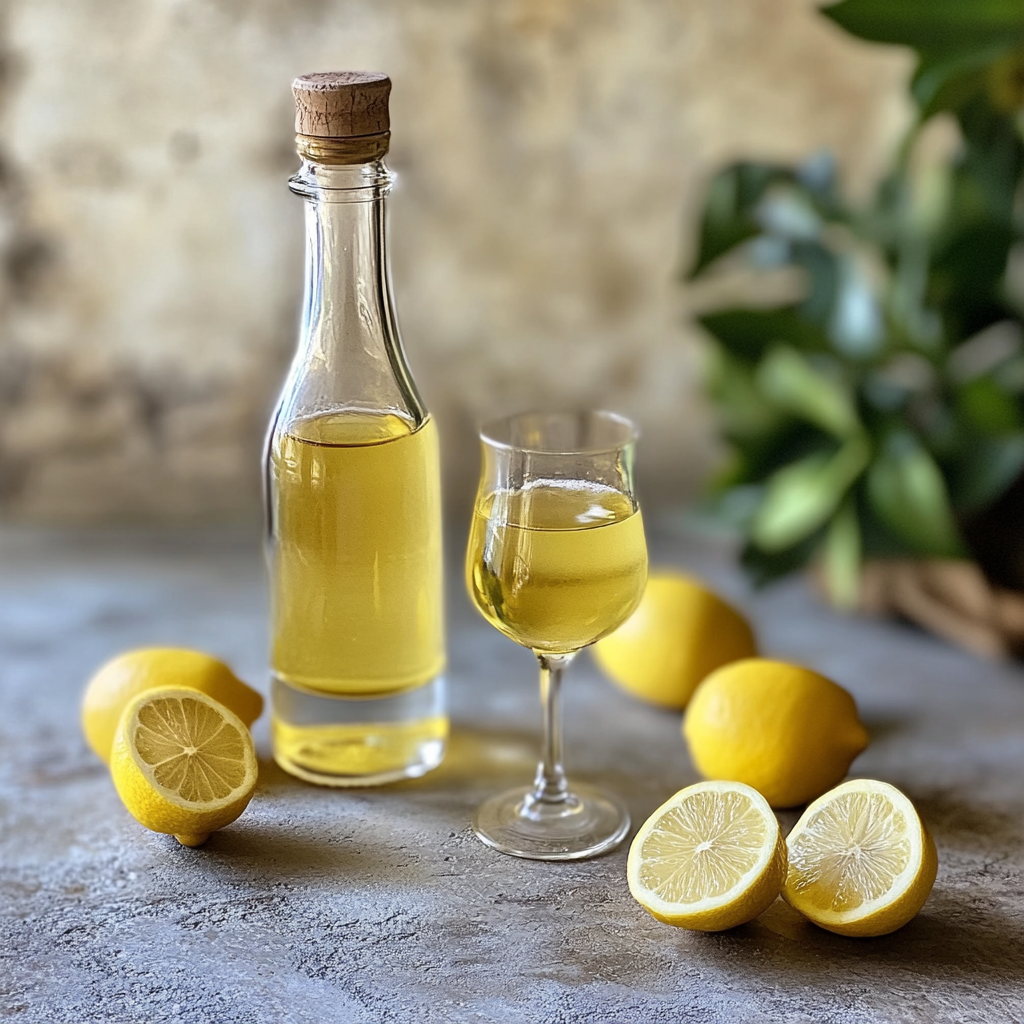Limoncello is a delightful Italian lemon liqueur that embodies the vibrant flavors of the Amalfi Coast. Making your own authentic limoncello recipe at home allows you to capture this zesty, refreshing drink with just a few simple ingredients. Whether you’re a seasoned home cook or a novice, you can master the art of homemade limoncello by following a detailed process that ensures quality and authenticity. This authentic limoncello recipe not only enhances your after-dinner experience but also brings a little piece of Italy into your home.
Creating an authentic limoncello recipe involves using the freshest lemons and a precise method to infuse the flavors properly. By following this guide, you will learn the essential steps to perfecting this Italian classic, ensuring your homemade limoncello rivals even the best store-bought varieties. Embrace the simplicity and tradition of this authentic limoncello recipe to create a drink that truly represents the essence of Italy.
The Rich History Behind the Limoncello Recipe
The origins of limoncello are steeped in legend, with stories tracing back to the monasteries of Southern Italy, ancient Roman times, and even mythological tales involving Zeus. Many believe the modern version of this iconic Italian lemon liqueur originated in the early 20th century on the island of Capri. The traditional recipe was first commercialized here, turning it into a staple in Italian culture and beyond.
Limoncello’s status as a symbol of the Campania region was cemented when it earned its designation as a Protected Geographical Indication (PGI). This recognition ensures that only liqueurs produced in this region can bear the name limoncello. Every sip of authentic limoncello takes you on a journey to the sun-drenched terraces of Southern Italy.
For more insight into the rich history of this liqueur, explore the origins of limoncello and its connection to the broader world of Italian digestifs.
Traditional vs. Modern Variations: Key Differences in Limoncello Recipe
Traditional recipes for limoncello have been passed down through generations, but modern variations have emerged, offering new twists on the classic formula. The primary differences lie in the types of citrus used and the length of the infusion process. Traditional methods rely solely on lemons, while modern versions might incorporate oranges or even mandarins, leading to variations like Arancello or Mandarincello.
Whether you opt for a traditional recipe or a modern twist, the key to creating exceptional limoncello lies in the quality of the ingredients and the meticulous care taken during preparation.
Essential Ingredients for the Best Homemade Limoncello Recipe
To craft your own batch of this liqueur, you’ll need just a few basic ingredients:
- 10 organic lemons (preferably from the Amalfi Coast or a similar high-quality source)
- 1 liter of pure alcohol or high-proof vodka
- 400 grams of granulated sugar
- 1 liter of water
Using organic lemons ensures the peels infuse the alcohol with vibrant, pure oils, free from waxes or pesticides. For a deeper understanding of the health benefits of lemons, see how they contribute to the refreshing quality of this liqueur.
Step-by-Step Instructions: How to Prepare Limoncello for Your Recipe
- Thoroughly Wash the Limoncello: Scrub the lemons under warm water using a vegetable brush. This step is crucial, especially if waxed lemons are your only option.
- Carefully Peel the Limoncello: Remove only the yellow zest while avoiding the bitter white pith.
- Infuse the Lemon Peels with Alcohol: Place the peels in a large glass jar and cover them with the alcohol. Seal the jar and store it in a cool, dark place for at least two weeks, shaking it gently every day.
How to Perfectly Infuse Lemon Peels for the Best Flavor
The infusion process allows the alcohol to extract essential oils from the lemon peels, resulting in a fragrant and intensely flavored base for your homemade liqueur. Traditionalists often allow the mixture to infuse for up to a month, but even a shorter period will yield a delicious result.
Crafting the Ideal Sugar Syrup for Your Limoncello
Once the infusion period ends, prepare the sugar syrup:
- Heat 1 liter of water in a saucepan and gradually add the sugar, stirring until it fully dissolves.
- Cool the syrup to room temperature before mixing it with the infused alcohol.
Combining Ingredients for a Flawless Blend
After the syrup cools, strain the lemon peels from the alcohol and discard them. Slowly mix the syrup with the infused alcohol, stirring gently to combine. Adjust the sweetness or alcohol content to your preference. Store the mixture in sterilized bottles and allow it to rest for at least another week to let the flavors meld.
How to Serve Limoncello for the Best Taste Experience
This liqueur tastes best when served ice-cold, directly from the freezer, in small, chilled glasses. Traditionally enjoyed as an after-dinner drink, it can also enhance various cocktails or desserts.
Storing Your Homemade Limoncello Properly for Long-Lasting Flavor
Proper storage is essential to preserving the flavor and quality of your liqueur. Keep the bottles in a cool, dark place, and store them in the freezer if possible to maintain the liqueur’s refreshing chill.
Experiment with These Limoncello Variations and Flavors
For those looking to experiment, consider these popular variations:
- Arancello: Made with orange peels instead of lemons, offering a sweeter, more citrus-forward flavor.
- Mandarincello: Uses tangerine peels for a unique twist.
- Crema di Limoncello: A creamy version made by adding milk or cream to the traditional recipe. Learn how to make Crema di Limoncello for a delicious variation.
FAQs About Making the Perfect Limoncello at Home
What is the best alcohol to use for this liqueur?
Grain alcohol with a high proof works best, but vodka can substitute if needed.
Why did my liqueur turn cloudy?
This normal reaction occurs when the sugar syrup mixes with the alcohol, especially if the syrup has not completely cooled.
How long should I infuse the lemon peels?
A minimum of two weeks works well, but infusing for up to a month will yield a more intense flavor.
Can I use regular lemons instead of organic?
While possible, it’s not recommended as the peels may contain waxes or pesticides that can affect the flavor.
How do I fix a bitter liqueur?
Ensure that you’re only using the yellow part of the lemon peel and avoiding the pith. If bitterness persists, add more sugar syrup to balance it out.
Avoid These Common Mistakes When Making Limoncello at Home
- Not using organic lemons: This choice can introduce unwanted chemicals into your liqueur.
- Peeling too deeply: Avoid the bitter white pith beneath the lemon peel.
- Rushing infusion times: Shortening the infusion process results in a weaker flavor.
By following this guide, you’ll create a delicious liqueur that rivals even the best store-bought varieties. Enjoy your homemade limoncello as a refreshing treat that brings a little taste of Italy to your home!





